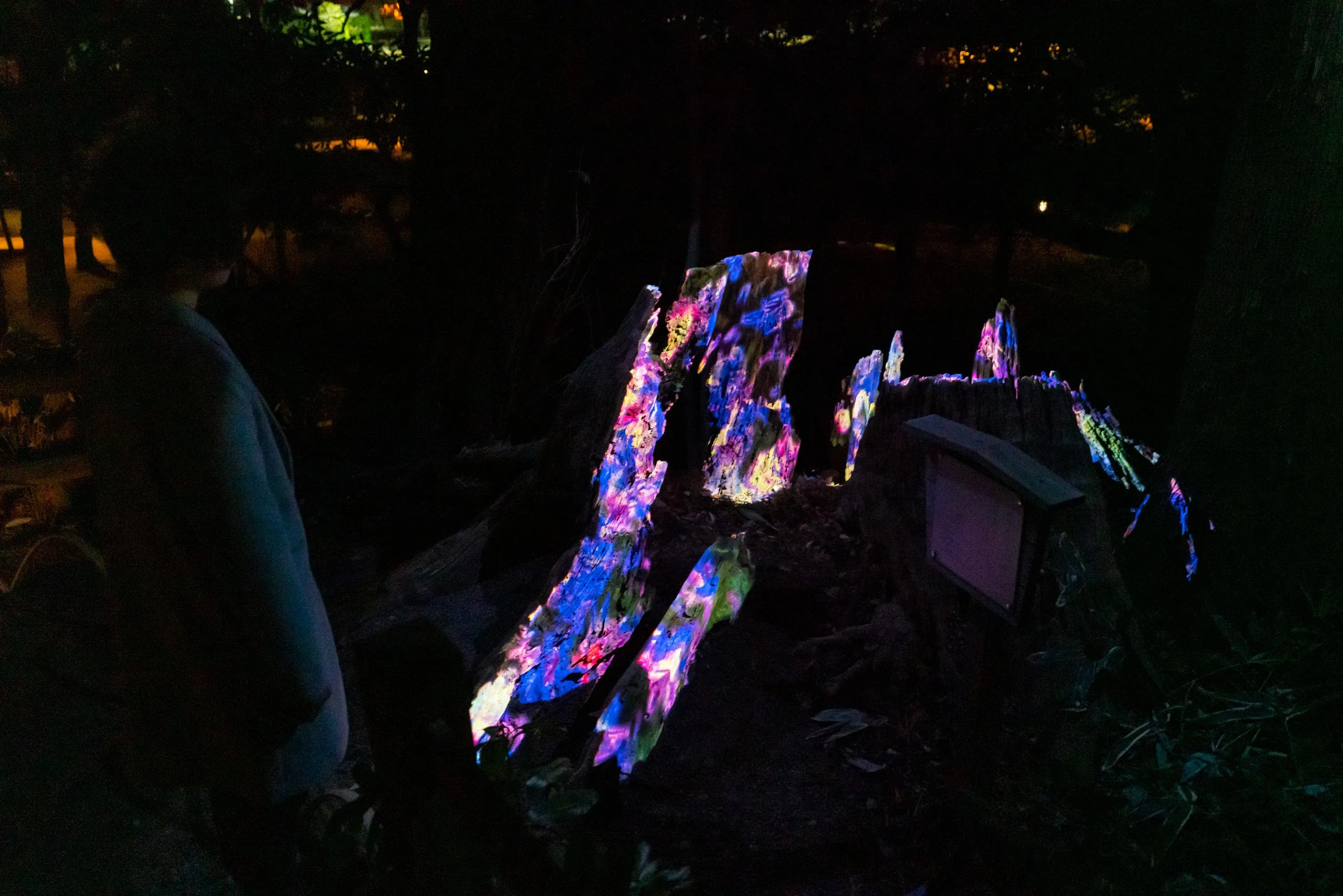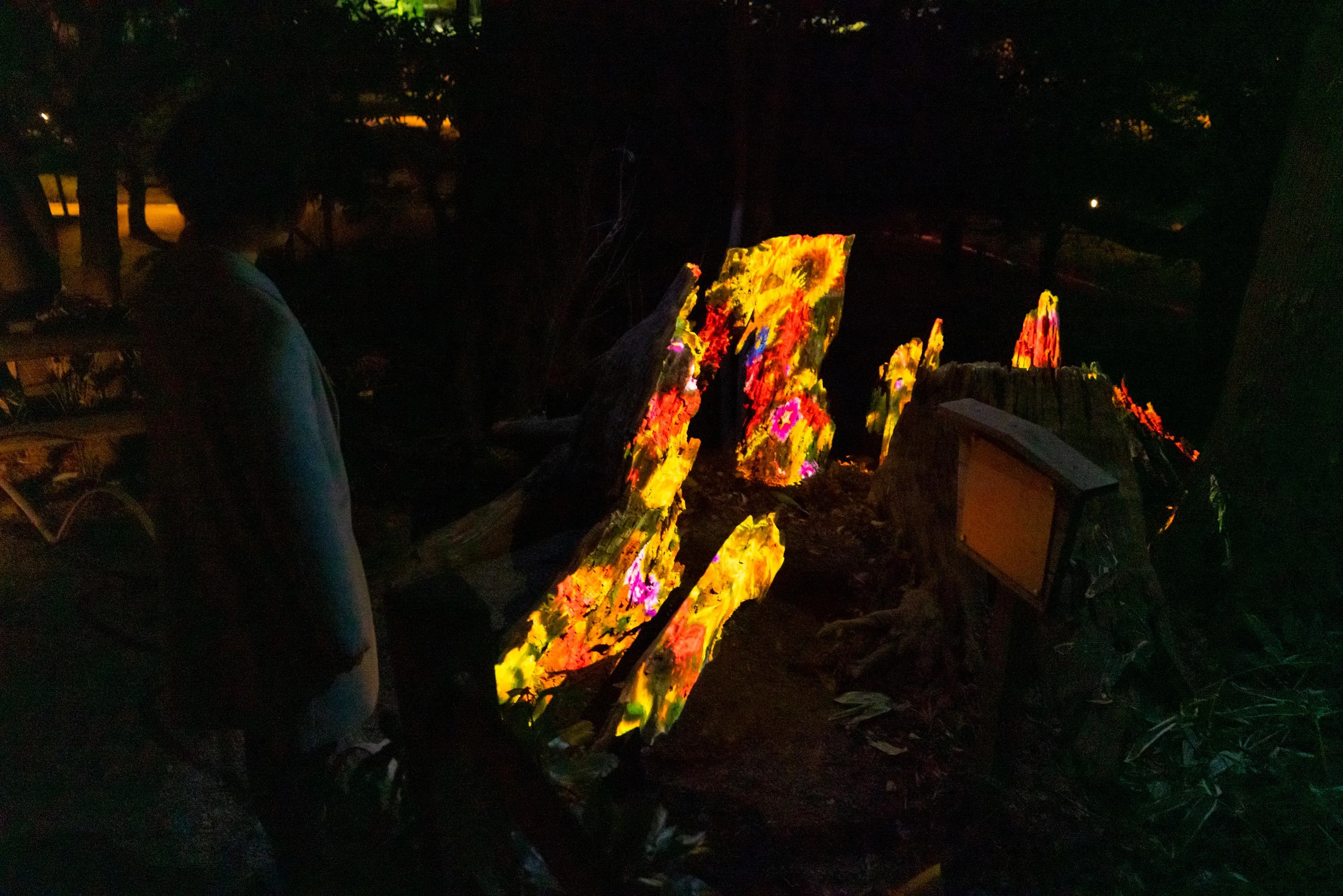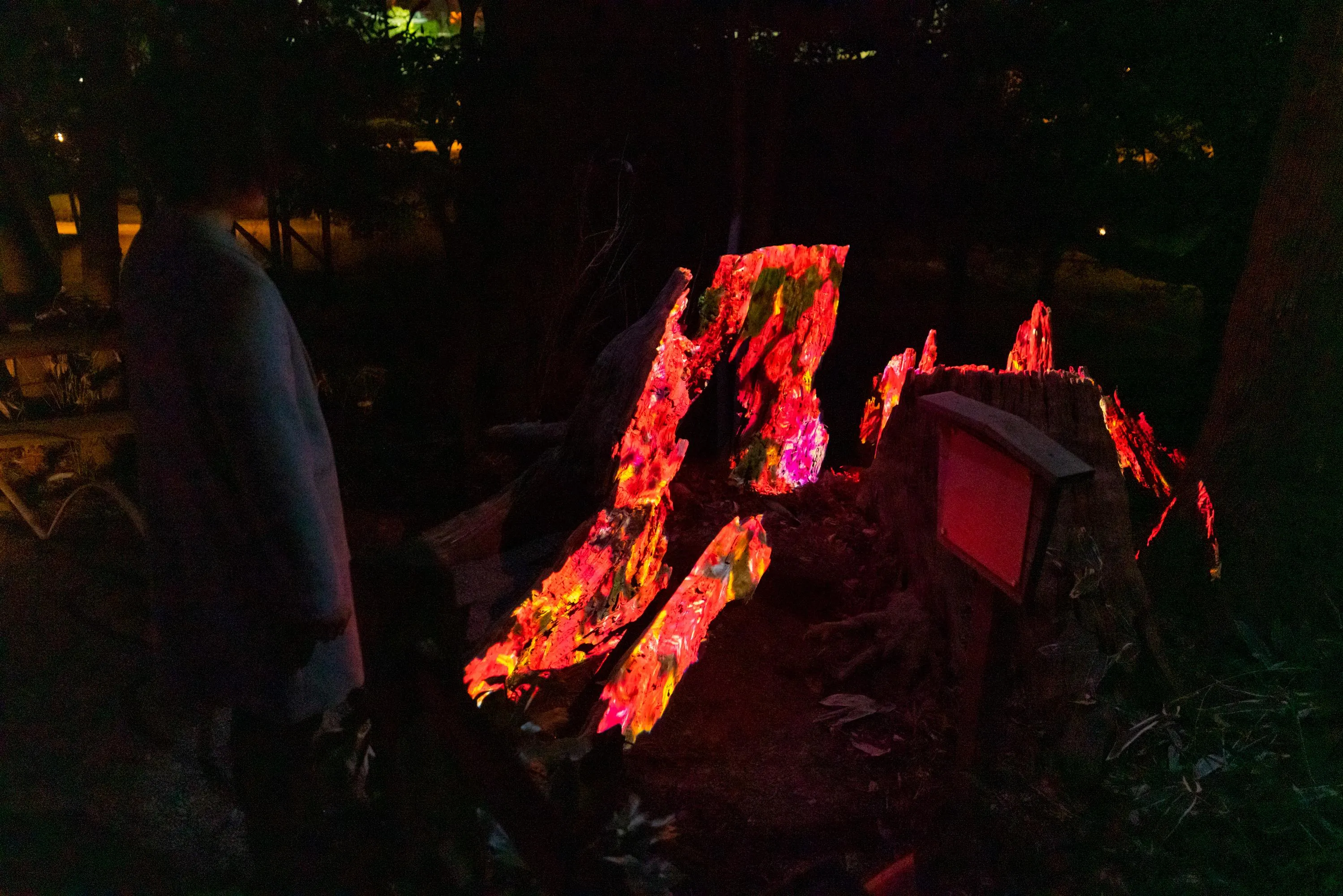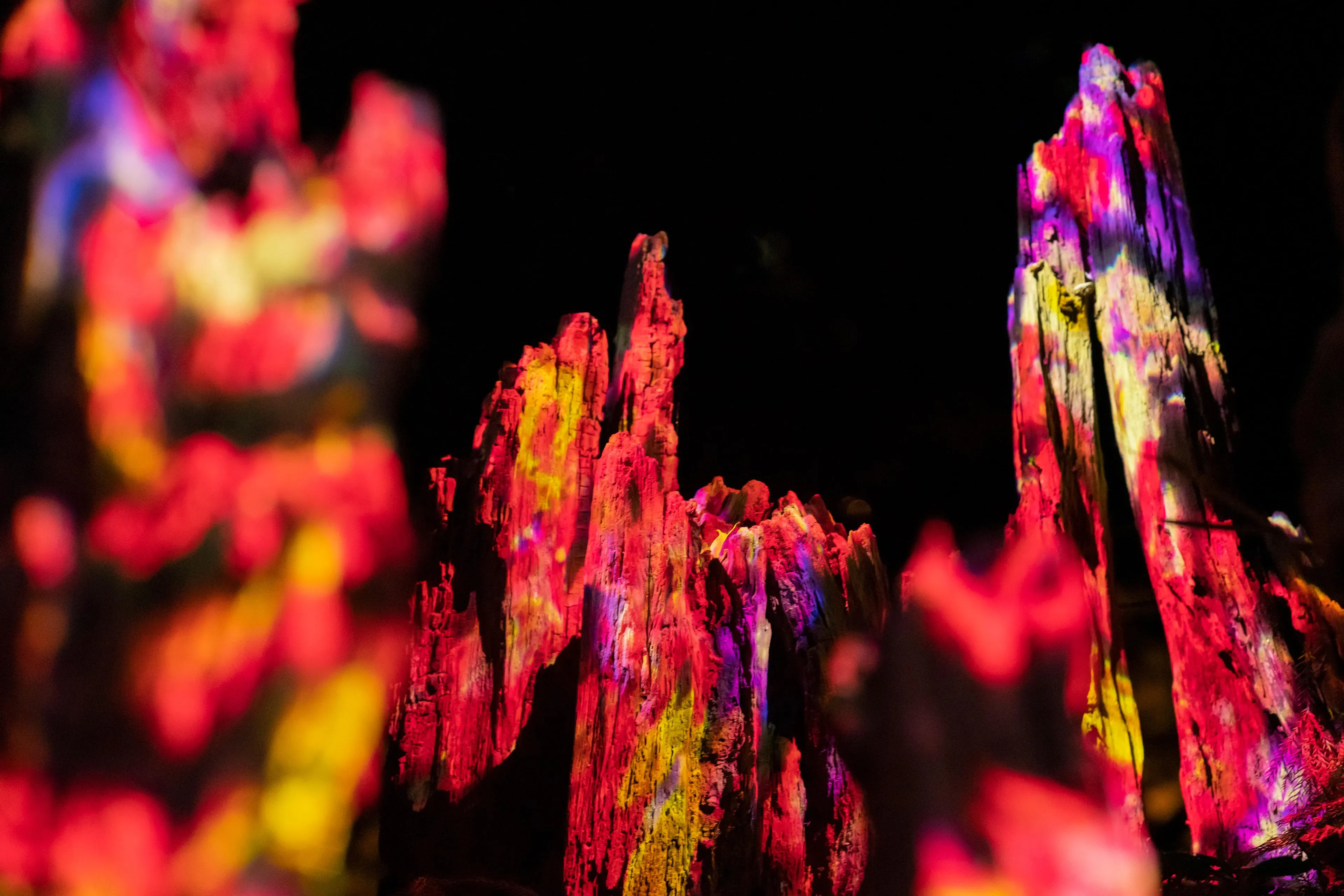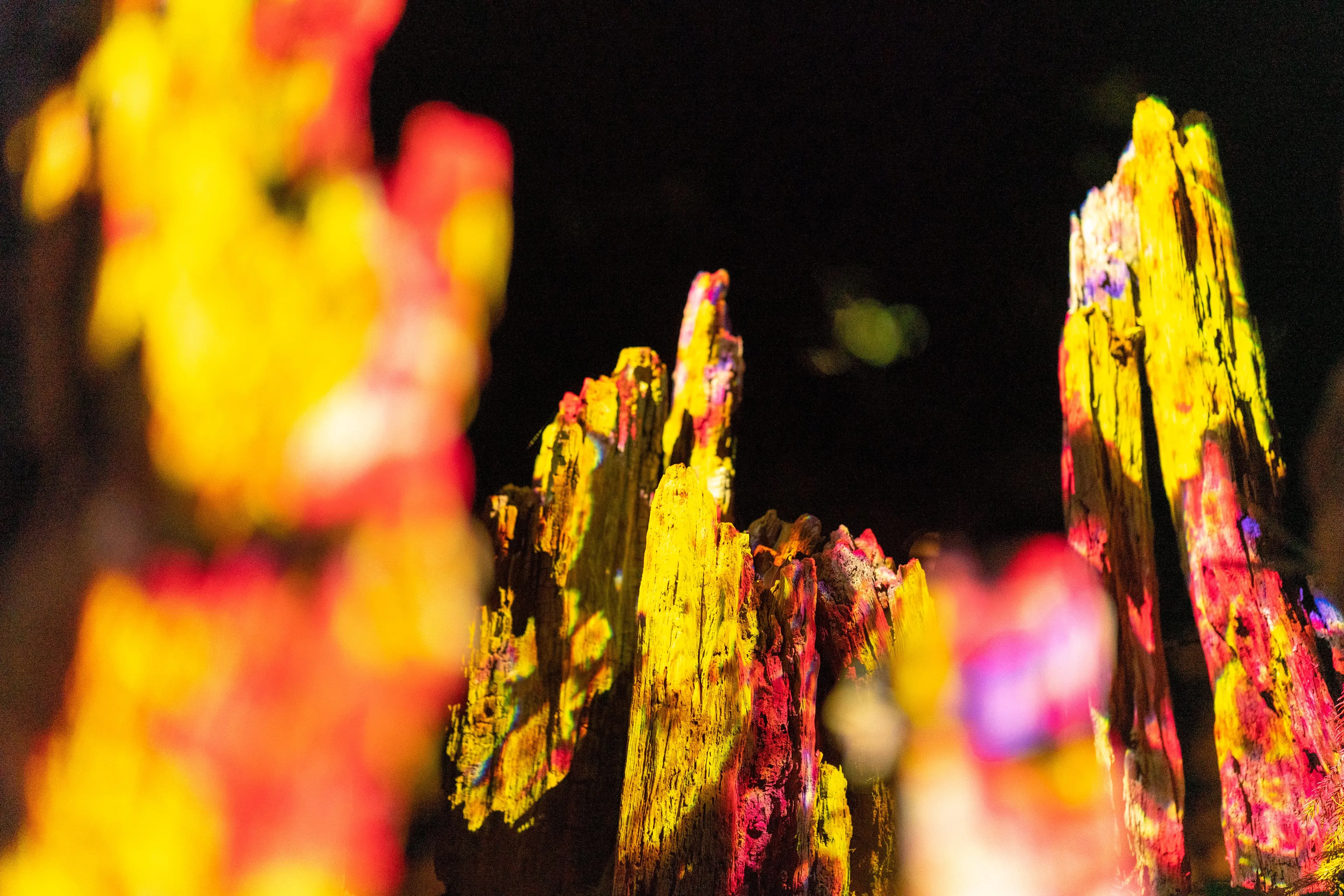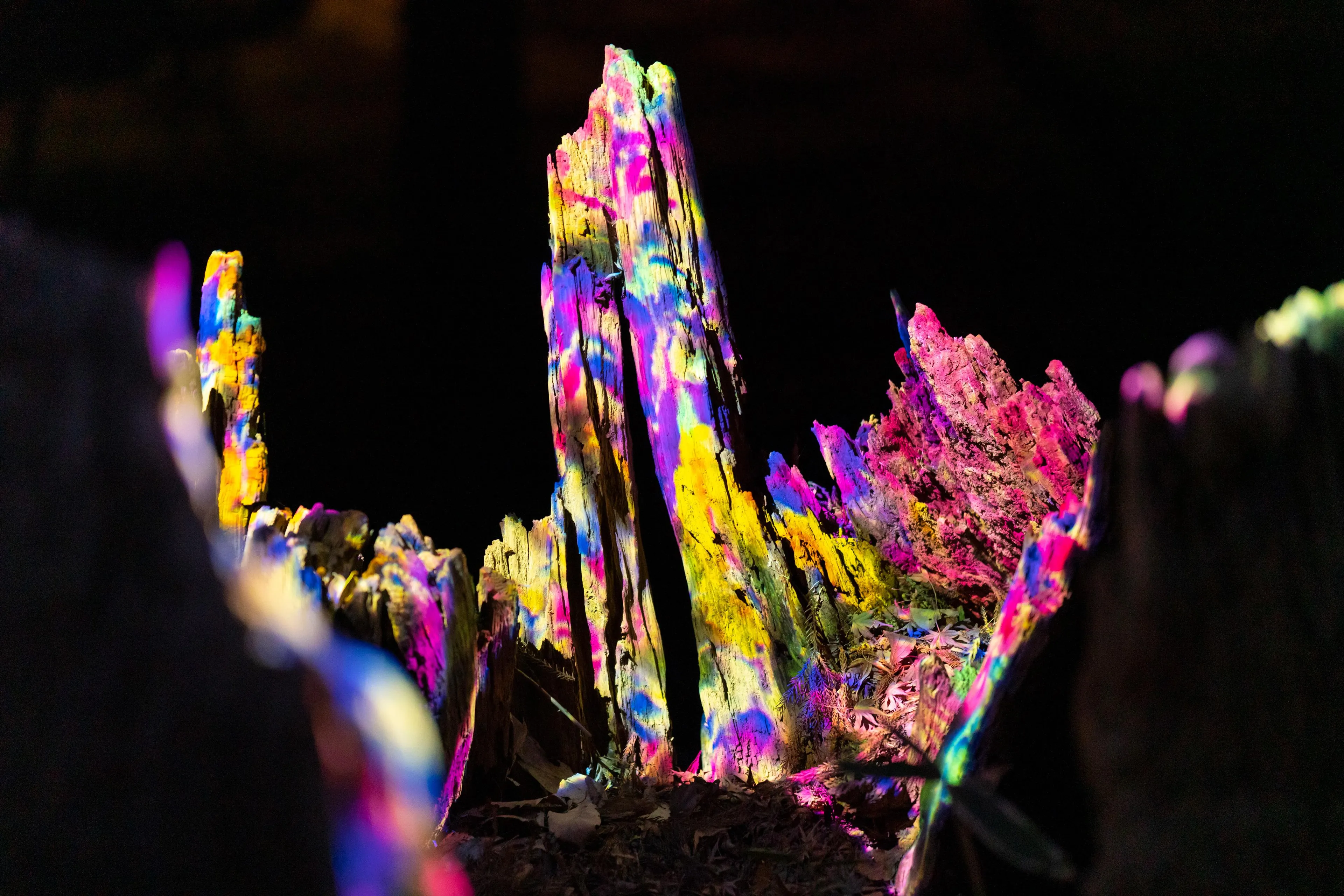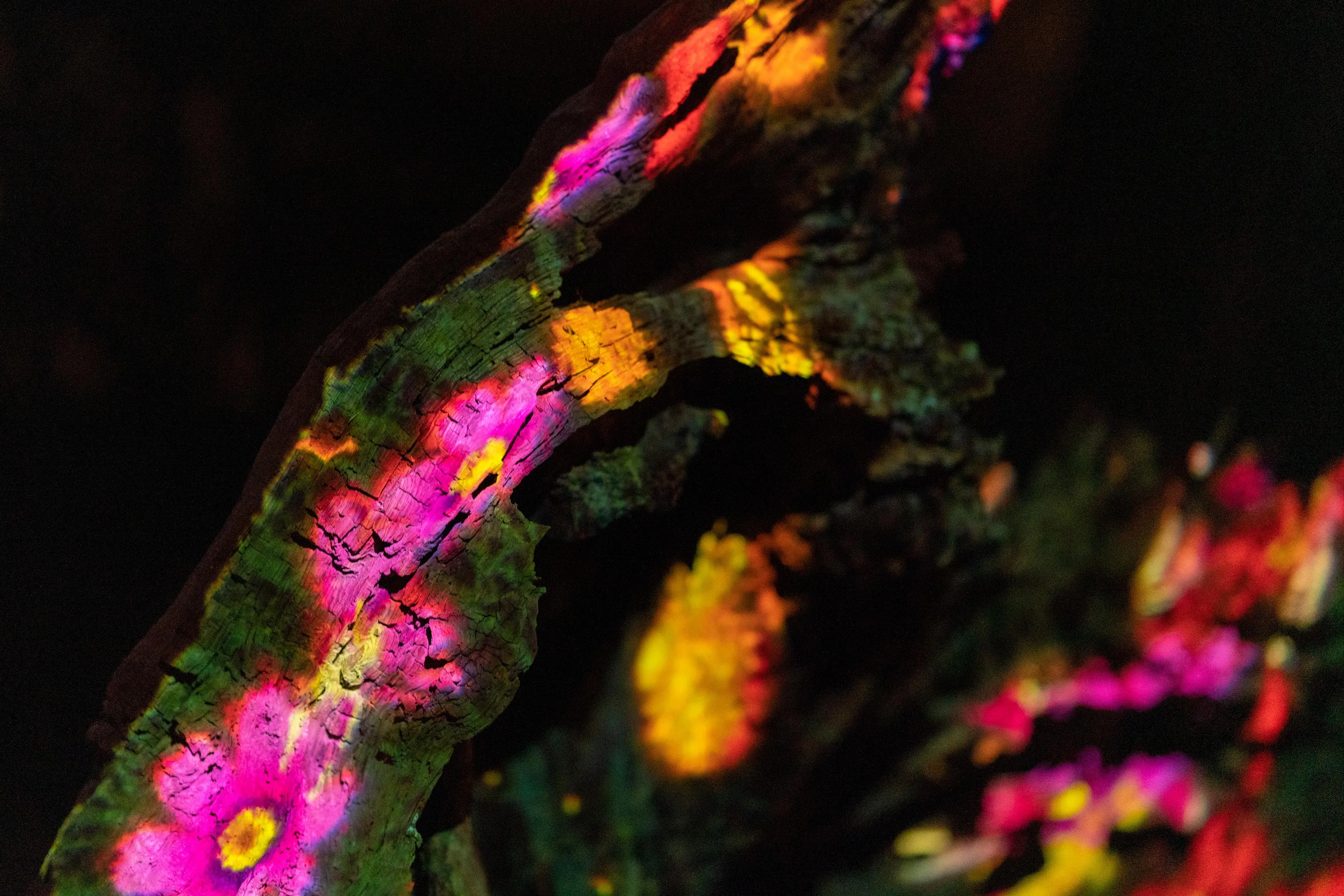Ever Blossoming Life Tree - Fallen Jiro Cedar

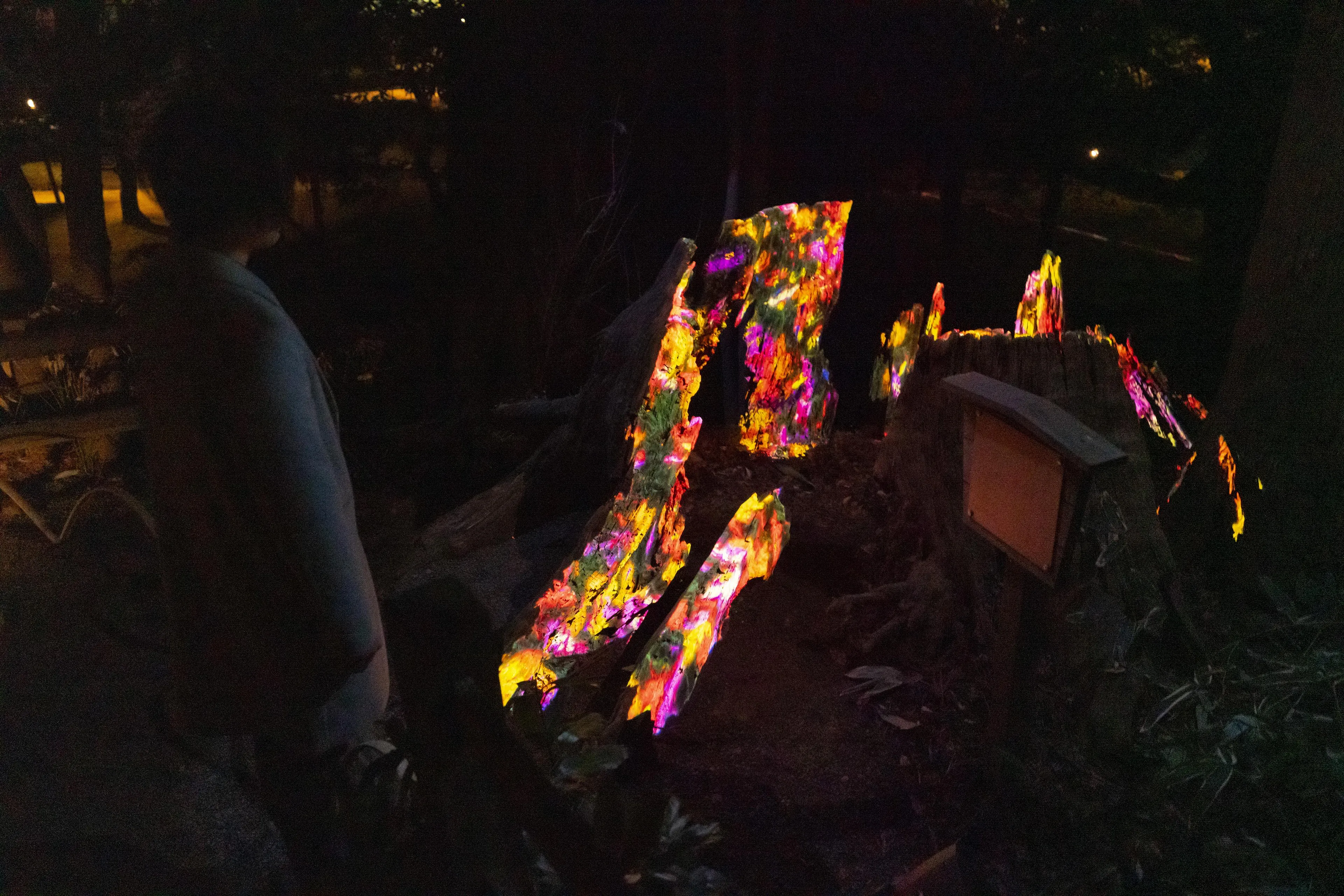
Ever Blossoming Life Tree - Fallen Jiro Cedar
Flowers bloom and scatter for eternity in the decaying cavity inside the trunk of a large tree that fell due to a strong typhoon (1964). A year’s worth of seasonal flowers from the area bloom over the course of an hour, continuously scattering and changing. Flowers are born, grow, bud, bloom, and eventually scatter, wither, and disappear. The flowers are in a continuous cycle of life and death, repeating forever.
Kairakuen Garden's giant cedar forest, created in the late Edo period (1842), changes daily with the imperceptibly slow flow of time, repeating every year. It is a space where endlessly long time accumulates. This giant cedar tree was probably here before the landscaping. After it fell, the tree’s cavity became a space where time has stopped. The flowers that repeat the cycle of life and death also have a different flow of time. Here, various space-times intersect and overlap.
Our own existence is part of this continuity of life and death, repeating endlessly for an overwhelming length of time, for billions of years. However, it is difficult to perceive this in everyday life. People are unable to perceive periods of time longer than their own lives. There is a cognitive boundary in people’s recognition of the continuity of time.
The eternal birth and death of the flowers in the hollow of the fallen tree that formed over an overwhelmingly long period of time and is beyond the boundaries of our cognition for long-term continuity, may allow us to realize that the existence of life itself is part of a continuous cycle of life and death.
The artwork is not a pre-recorded image that is played back; it is created by a computer program that continuously renders the artwork in real time. As a whole, it is continuously changing, and previous visual states are never replicated. The artwork at this moment can never be seen again.
